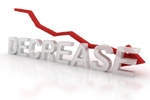Should You Worry About Your Bounce Rate?

A low bounce rate is often cited as a hallmark of a good website - 40% or lower is typically heralded as the goal - signaling that visitors are engaged with your site and finding useful content. A high bounce rate is often assumed to mean that your site is not doing its job. In reality, bounce rate means different things for different sites and the emphasis you place on it will vary according to the type of site you have and its goals.
What Does Bounce Rate Mean?
The definition from Google's Analytics help pages is: "Bounce rate is the percentage of single-page visits or visits in which the person left your site from the entrance (landing) page."
When is Bounce Rate a Relevant Metric?
- If you have a sales or conversion process which requires the user to follow through multiple pages on your site.
- If exploration of your site is important to your goals.
- If you are trying to turn new visitors into loyal readers or customers.
- If yours is a retail site and you want people to shop around and make purchases.
- If your homepage is not inducing further clicks, particularly if it contains blog excerpts or other ‘teaser' content.
What a High Bounce Rate Could Mean:
1. Keywords and content are mismatched.
In cases where visitors are coming from search engines, a high bounce rate may mean that the keywords they used and the web content they found on your site are not aligned - so your site doesn't meet their expectations in some way.
What you can do:
Analyze your keyword traffic and make sure your pages are optimized for the keywords you want and that the content is closely aligned with keywords and not misleading in any way.
2. The next step in your conversion or goal process is not obvious or easy enough.
What you can do:
Look at your landing pages with an objective eye and make the next step clear and easy to take.
3. The navigation on your site is confusing or unclear, making additional content hard to find.
What you can do:
Re-evaluate the navigation and see if there are ways to streamline or simplify. Also double-check for browser compatibility - perhaps the page is not displaying correctly under some conditions.
4. Your offer or product is not presented in a compelling or easy to understand way.
What you can do:
Look at your sales copy or offer details and see if you can refresh it or make it more appealing. You could try split-testing different versions to see which performs better.
5. Your site has technical problems. Particularly if your bounce rate suddenly spikes or displays an unusual trend, it could be an indication of technical issues - broken images or links, or something on the page not loading correctly.
What you can do:
Check for compatibility and broken links. Test the load speed of the page and generally make sure your code is as clean and functional as possible. Check for server outages and other issues that could have temporarily affected the functionality of your site.
A high bounce rate might not be a problem if:
- You have a blog homepage containing all your recent posts in their entirety - Blogger blogs are notorious for this. When all your posts are presented up front there would be little reason for someone to click to any other pages.
- You have a loyal blog following and your site has a higher proportion of returning visitors than new visitors. Your followers and subscribers may just want to read the newest post and have no need to visit other pages.
- You are promoting a landing page which contains the call to action within it, such as submitting an email address. That single page can do its job effectively without requiring further clicks.
- The call to action or conversion takes your visitor off-site - to an external shopping cart or email sign up for example. This would look like a bounce, but can still be a conversion.
- Blogs typically have higher bounce rates compared to other types of sites so the same benchmarks do not apply.
Bounce Rate is Not the Only Metric.
Don't look at bounce rate in isolation - look at the overall picture of your website and how it's performing according to the metrics that matter to you. What DO you want your visitors to do at your site? Are you making it easy for them to do that, and are you measuring it?
Look for trends and other data that give you a fuller picture of what the bounce rate really means:
- Is the bounce rate higher or lower for certain keywords?
- Does it vary according to how people found your site? Search engines vs. social media, for example.
- How does it vary with New vs. Returning visitors?
- Which particular pages or types of content on your site have higher or lower bounce rates?
- Look also at length of time the visitor spends on the page which could indicate whether or not they are reading what they find - this is very important for a blog.
Originally published here.
Choose Font Size:
Recently Launched Sites
Cam-Bag.Com
Do you love to take outdoor photographs? Be prepared with one of the Camera and Laptop Bags from Cam Bag. With storage solutions, organization, safety, and security, you will be ready for anything.
Contact Us:
Phone: 647-477-2992Email: info @ CmsBuffet.Com
Helping You Achieve Web Visibility.


